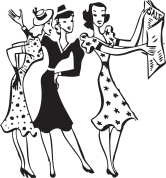Hero or Heroine: Who Carries the Book?
May 2, 2012
I received a wonderful rejection the other day. An editor passed on my manuscript, but in doing so, she told me she liked my voice and that I showed potential as a romance writer. Why’d she pass on the manuscript? Because she had a problem with my heroine. And this editor isn’t the only one.
This particular manuscript has been submitted a few times. Out of those three submissions, I’ve received two rejections with personalized feedback. Both personalized rejections named the heroine as the problem. The first time an editor passed because the heroine was “unlikeable.” I tweaked and twisted the story to give the heroine a personality boost. Now, the heroine’s conflict has been deemed too weak, causing the heroine to seem too flip. *head to desk*
The funny thing—or not so funny thing, depending on how you look at it—is that I’ve always had a bit of a problem with the heroine. She’s just not right. But I’ve spent two years on this manuscript. I’ve constructed, deconstructed, written, and rewritten to the point that I have several versions, some which no longer resemble the original story. Ugh! I don’t know what to do. Is this the point where a writer tosses the manuscript aside?
For now, I’m putting this story away, which pains me because of all the time we spent together. But the time wasn’t wasted. I’ve learned a ton from that one manuscript. One of the things I learned is that I have to pay attention to my heroines as much as a pay attention to my heroes.
As a reader and a writer, heroes drive my enjoyment of a book. I will stick with a story to the end as long as the hero carries me there—even if the heroine isn’t my favorite person. Is that odd? Maybe. Maybe not. But odd or not, it’s getting in the way of my pursuit of publication.
So, while I tuck another manuscript under my bed, I’m moving forward with the knowledge that it takes two for more than a tango. It takes both the hero and heroine to make good impressions when it comes to selling a romance novel.
Elley
